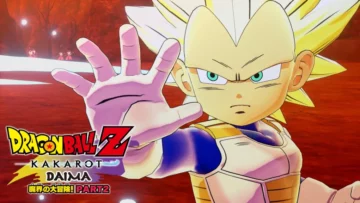VTuber Debut Stream Guide: What to Do, Talk About & Structure for Beginners
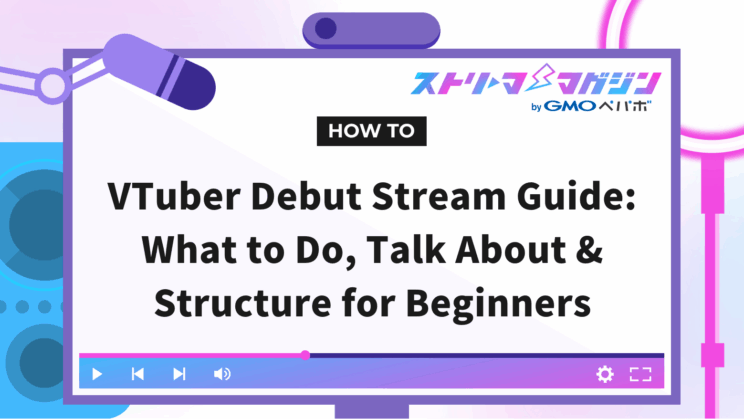
Index
- What is the first broadcast of a VTuber? Key purposes and flow to keep in mind
- What to talk about in the first broadcast? 5 basic topics!
- Preparation checklist for a successful first broadcast
- Ideas and projects to amp up your first broadcast
- Optimal timing and schedule design for the first broadcast
- Follow-ups and reflections after the first broadcast
- Conclusion
First broadcast. Many VTubers must be struggling in front of the screen, wondering what to talk about and what to prepare.
The impression made during the initial broadcast determines the future of your channel. No matter how well-prepared your model and equipment are, vague content can make it difficult to capture the viewers’ interest.
This article summarizes the basic content to discuss during your first broadcast, how to structure the flow, and ideas for exciting projects.
If you organize everything from preparation to follow-up after the broadcast, your anxieties will surely disappear.
What is the first broadcast of a VTuber? Key purposes and flow to keep in mind
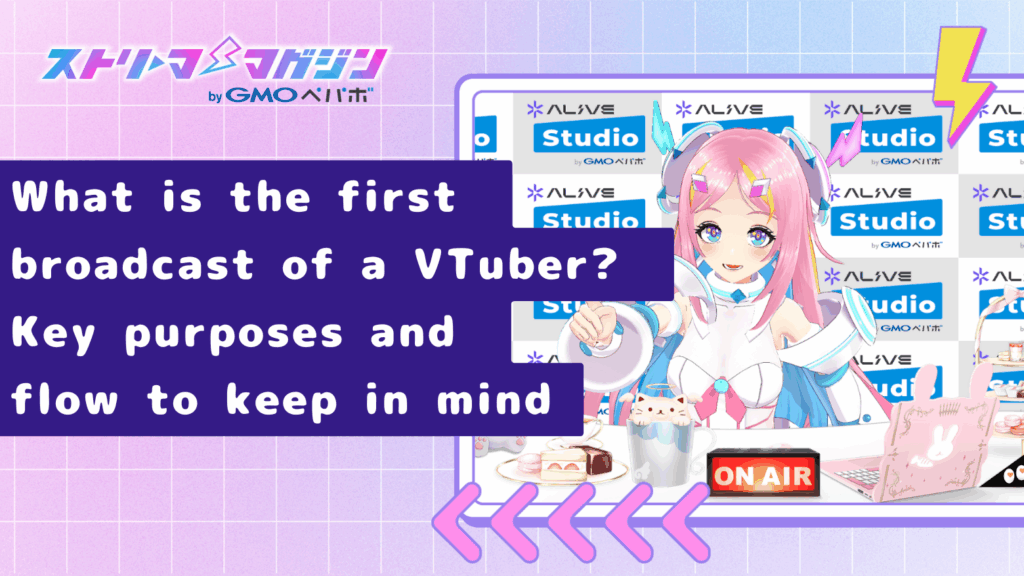
The first broadcast is a crucial moment that signals the start of your VTuber journey.
It is a time to introduce yourself to the viewers for the first time, sharing who you are and what you will be doing moving forward.
There’s no need to aim for perfection. What’s important is to make viewers feel “I want to see more.” To achieve this, focus on delivering your true self rather than starting with flashy projects.
The general flow is as follows:
- Opening greeting and self-introduction
- Introduction of activities and goals
- Interaction such as comment introductions and Q&A
- Future plans and tease for the next broadcast
- Ending (words of gratitude and closing remarks)
By consciously focusing on these three aspects of your first broadcast—”self-introduction, interaction, and building anticipation”—everything will come together naturally.
If you are worried about being nervous, preparing a light script can also be a good idea. Just deciding on the order of speaking and key points can give you a sense of ease.
Moreover, getting ready for next-time teasers and the waiting room will significantly increase the chances of registrations and revisits.
What matters most is not perfection, but “being true to yourself.” If you stumble a bit, approach it with a mindset to laugh it off. Your first broadcast is the first step to create opportunities for viewers to support your future projects.
What to talk about in the first broadcast? 5 basic topics!
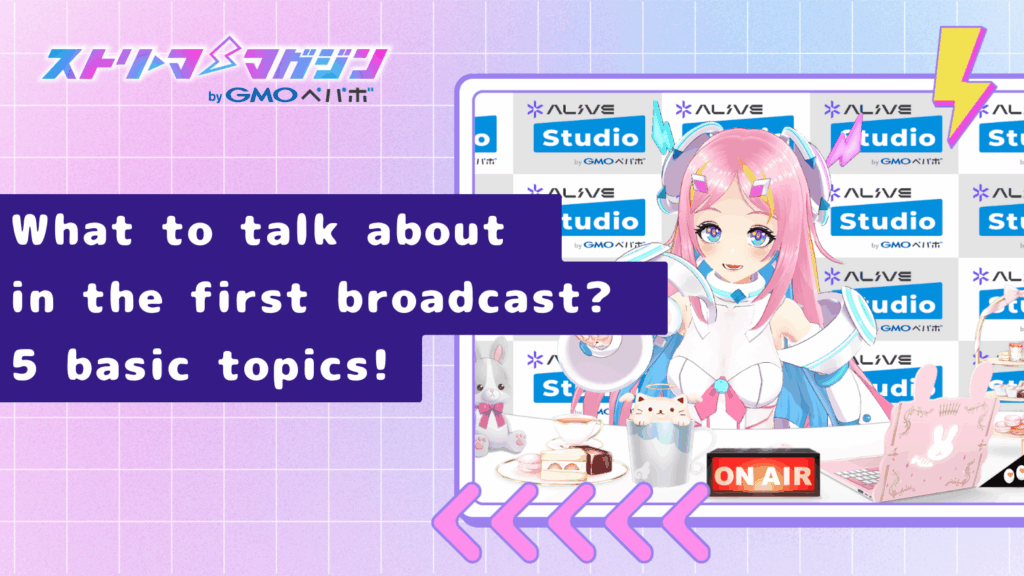
During the first broadcast, it’s easy to want to talk about this and that.
However, cramming too much information can confuse viewers about where to focus their attention. First, let’s solidify the “basics to get to know you.”
Here, we will introduce five classic topics that many VTubers incorporate into their first broadcast.
Just following this flow to speak will naturally help organize a cohesive broadcast.
Self-introduction: Creating the first impression of your character
The first thing to communicate is, of course, about yourself.
Clearly discuss basic information such as your name, what you would like to be called, birthday, and hobbies.
There’s no need to overthink it; it’s enough to convey “what kind of person (character) you are.”
Since your tone of voice and way of speaking are also memorable parts, try to speak with a slightly brighter tone to create a welcoming atmosphere.
Activity content: Clarifying what kind of broadcasts you will have
By clearly conveying the genres of future broadcasts, it becomes easier for viewers to feel like “I want to follow this person’s broadcasts.”
For example, just lightly discussing “mainly chatting,” “specializing in horror games,” or “wanting to do singing streams every week” is sufficient.
If you’re still undecided, it’s okay to say honestly, “I want to figure it out as I go.”
Goals and dreams: Setting goals that fans will want to support
Expressing goals such as “I want to reach 1000 subscribers” or “I want to release original merchandise” creates a trigger for support from your fans.
Small goals are perfectly fine.
By openly sharing your thoughts on your activities, you can significantly reduce the distance between you and your viewers.
Announcing your broadcast tags, fan art tags, and fan names is also a classic move.
If you establish, “use this tag for broadcast feedback” or “use this for fan art,” the interactions on social media will become much more lively.
If you have the time, conducting a poll during your first broadcast to decide these aspects can also be a good idea.
This becomes an experience where listeners feel “I helped create this too.”
For more details on how to set tags for broadcasts or types of tags, please see the following article.
VTuber Hashtags: Beginner’s Guide to Choosing and Top Recommendations
Model reveal and screenshot time
A highlight of the first broadcast is the model reveal.
Showcase your standing posture and expressions, and set aside time for screenshots to encourage sharing on social media.
Just letting viewers know “post with this tag” will get them excited and engaged.
By showcasing smiles and movements here, your charm will leave a stronger impression.
If you’re unsure, if you cover these five topics first, it will be more than enough. Don’t rush; just speak at your own pace.
There’s no need to try to wrap it all up perfectly; just relax and convey your thoughts in your own words.
Preparation checklist for a successful first broadcast
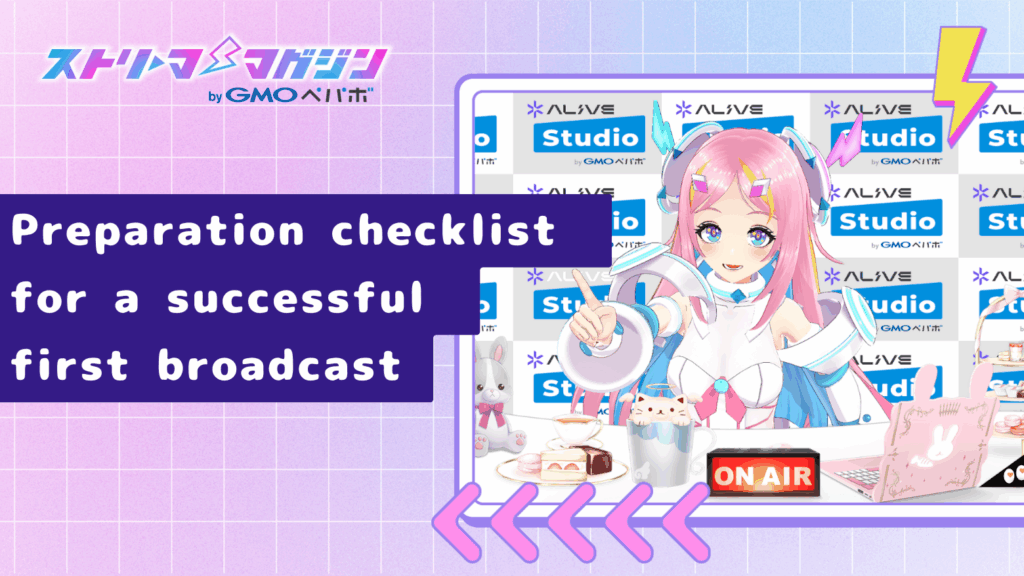
The success of your first broadcast is largely determined by “how much you prepared” rather than your speaking skills on the day itself.
To avoid panicking once the broadcast starts, let’s organize the points you should check by the day before.
First, prepare to “get people to know about your broadcast.”
By announcing the date, time, and channel URL on X (formerly Twitter) and pinning the post, it becomes easier for viewers to find it.
Tags like “#VTuberPreparation” and “#FirstBroadcastAnnouncement” are commonly used.
If possible, gradually unveil parts of your standing artwork or logo to create the “countdown to debut” effect.
Those who respond at this stage are highly likely to come to the first broadcast.
Check the broadcasting environment, including OBS, microphone, and lighting
It’s common to panic if issues arise just before the broadcast starts.
Always test the microphone volume, BGM balance, and video brightness beforehand.
Testing a recording in OBS’s preview allows you to objectively check how the sound comes across.
Additionally, simply adding a bit of lighting can significantly change the impression.
A brighter screen enhances your expressions and gives a positive impression to first-time viewers.
Rehearsing the content and testing expressions
Make a note of the order you’ll speak in and try saying it out loud.
Even if you feel nervous, remembering the flow physically will help the words come out naturally.
It’s also reassuring to grasp your time allocation at this stage.
If using Live2D or a webcam, don’t forget to check expression tracking.
Confirm whether your smile looks natural and if your blinking is responsive, ensuring more natural movements during the broadcast.
Preparing thumbnails and waiting screens
The thumbnail displayed on the broadcast page acts as the cover.
Incorporate text like “First Broadcast” and “Debut” into a bright, visually appealing design to increase click-through rates.
Position your standing artwork prominently, having the viewer’s gaze naturally drawn toward the title.
The waiting screen can be simple.
Playing BGM or showing a message like “Starting soon” can help prevent attendees from leaving.
Prepare a comfortable environment for early arrivals to wait in peace.
None of this is over-the-top; however, thorough preparation can significantly enhance your sense of security.
If people think, “Oh, this broadcast seems professional,” that alone will create a good first impression.
On the day, take a deep breath. Trust in your preparations and start broadcasting as your usual self.
Ideas and projects to amp up your first broadcast
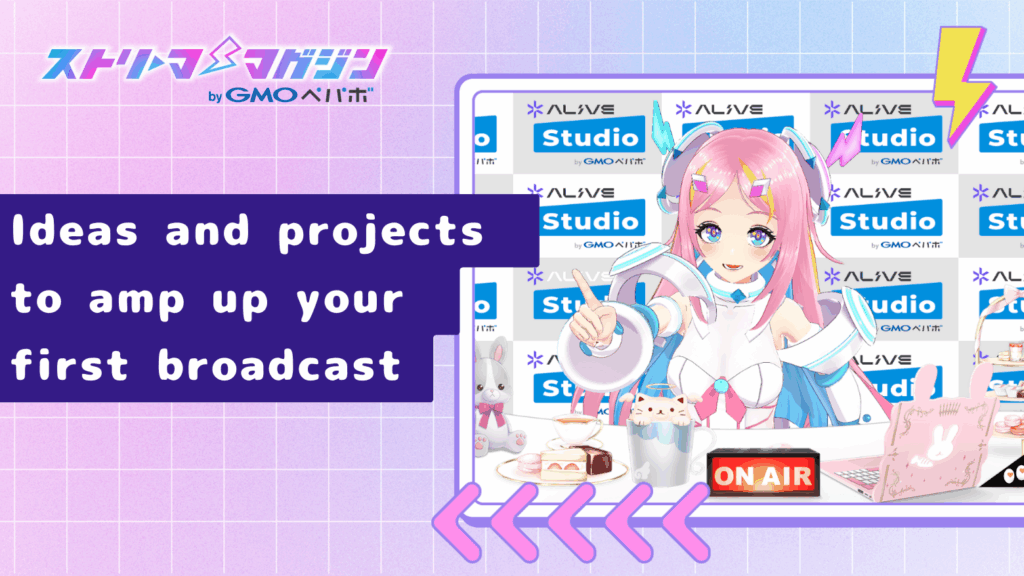
The first broadcast is a time that would be a bit of a waste to end with just an introduction.
Of course, while it’s important to introduce yourself, adding elements that foster fun will leave a much stronger impression on viewers.
Here, we present ideas for projects or themes that are easy to incorporate, even if you’re nervous, that can naturally elevate the excitement.
With a few enhancements, the overall atmosphere of the broadcast can become brighter.
Viewer marshmallow and question corner
A segment where you read and answer questions from viewers during the broadcast is a classic.
Share stories that you couldn’t touch upon during the introduction, or delve deeper into your favorite works or hobbies for a sense of closeness.
If you collect questions in advance with marshmallows or forms, the flow on the day will be smoother.
By also responding to questions from comments, it creates a sense of real-time engagement and excitement.
○○ themed talk or game commentary
Adding a touch of playfulness can make first-time viewers smile.
Preparing a light constraint like adding “nya” to the end of sentences or introducing yourself in three minutes can be an amusing method.
If you are good at games, playing a short game while chatting is also recommended.
The reactions and tempo are easier to convey, and it creates an atmosphere that encourages viewer comments.
Releasing a one-minute self-introduction video + reaction segment
Streaming your original short video during the first broadcast is also effective.
Having a self-introduction video titled “Understanding ○○ in 1 minute” prepared in advance can make for an impactful introduction.
After showing the video, reflecting on its content or sharing behind-the-scenes stories will help viewers feel even closer to you.
This also makes it easy to understand for people watching the archive and can lead to more shares on social media.
Time for showcasing talents like singing or drawing
Just showing off a little talent can dramatically change the broadcast’s atmosphere.
If you enjoy singing, you might try giving a live performance, or if you are good at drawing, doing a simple sketch on the spot. Sharing a little of your individuality can strongly capture the hearts of first-timers.
However, when singing copyrighted songs, make sure to check rights or usage permissions ahead of time and adhere to the established rules. If unsure, check the guidelines for using material from the YouTube Audio Library or karaoke services that allow streaming.
Optimal timing and schedule design for the first broadcast
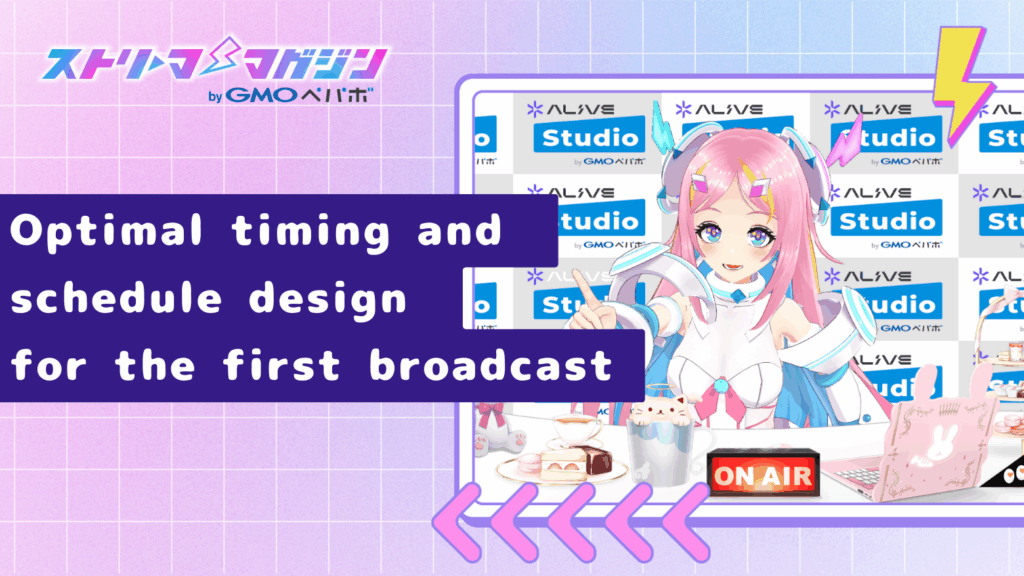
Even with thorough preparation, choosing the wrong time or length for your broadcast may result in fewer viewers than expected.
Selecting a time when viewers can easily tune in and ensuring they stay engaged throughout is where effective “time management” for the broadcast becomes very important.
Here, we’ll present recommended times, days of the week, and ways to structure your initial broadcast.
Why 30 minutes is best for a first broadcast
The purpose of the first broadcast is to let viewers “get a feel for your atmosphere” rather than having a lengthy talk.
Talking for 60 minutes in an unfamiliar environment can be unexpectedly challenging, and technical issues might arise midway.
It’s advisable to aim for around 30 minutes, keeping the tempo brisk.
This length is not too short, allowing first-time viewers to concentrate without losing interest.
As you continue broadcasting, you can gradually extend the length as you gain more content to discuss.
Times when viewers are more likely to gather
If you are targeting a domestic audience, the most popular viewing times are from 7 PM to 10 PM.
Many people relax post-work or school to watch broadcasts, leading to an increase in real-time comments. This timeframe also coincides with the traditional “prime time” for TV broadcasting.
Friday and Saturday nights are particularly active, with many VTubers aligning their first broadcasts during this period.
However, if other large broadcasts overlap, viewers might be scattered; thus, slightly adjusting the 9 PM slot can be beneficial.
As you continue broadcasting, you’ll eventually be able to view “when your audience uses YouTube” in YouTube Studio, revealing the times when your audience typically gathers.
During your first broadcast phase, there’s often still little data, so consider trying the generally busier evening times and adjust based on the data in subsequent broadcasts.
Sample script for pacing (example for a 30-minute structure)
For the first broadcast, it’s crucial to keep the tempo in mind and compact key points.
Here’s a recommended plan for a 30-minute broadcast:
- 0:00–2:00 Opening and greeting
- 2:00–8:00 Self-introduction and explanation of activity direction
- 8:00–15:00 Introduction of goals and tags, a little chat
- 15:00–22:00 Planning, Q&A corner, comment responses
- 22:00–28:00 Gratitude message and next broadcast tease
- 28:00–30:00 Ending and screenshot time
It’s perfectly fine if you can’t get through everything during your first broadcast.
Ending shorter can make viewers more eager to say, “I want to see more next time.”
On the day of the broadcast, try not to overthink the timing; focus on speaking naturally instead.
Follow-ups and reflections after the first broadcast
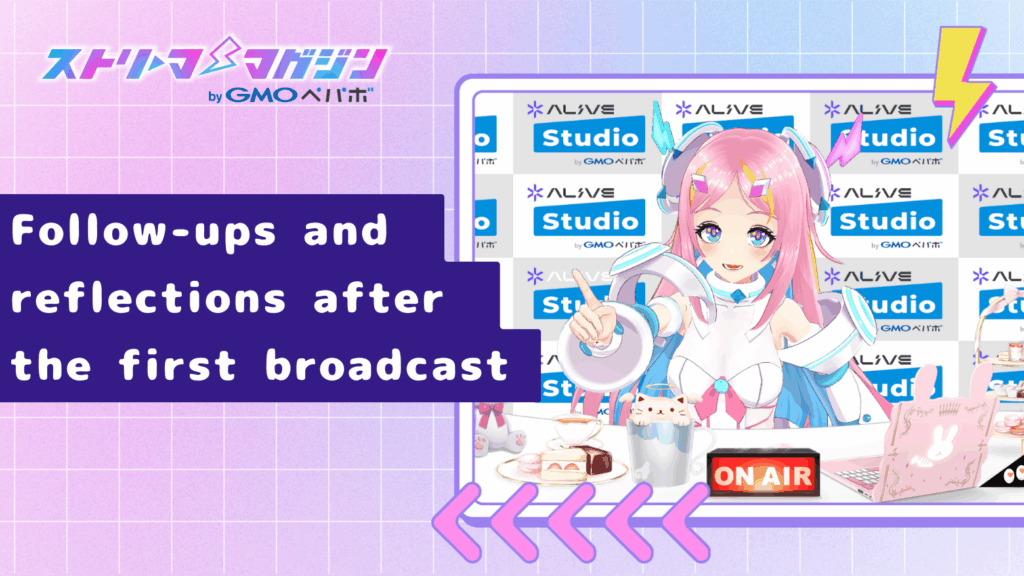
Once the first broadcast is over, it’s natural to want to take a breather.
However, within that afterglow is crucial insight that can lead you to the next step.
Here, we will introduce follow-up and reflection points that are effective to do immediately after your first broadcast.
It’s ideal to express gratitude to those who watched your broadcast as soon as possible.
Once the broadcast ends, it will be automatically saved as an archive.
After a few minutes, when the URL becomes valid, post on X (former Twitter) with a message like “Thank you for coming!”
Once your subscriber count increases and you can utilize YouTube’s community post feature,
sharing gratitude and details for the next broadcast there will expand your connection with fans.
In the early stages, it’s often not yet available, so focusing on social media dissemination is more than sufficient.
Including the archive URL in your post will also make it easier to reach those who missed it.
A short comment will suffice. For example, a simple note like “Thank you for my first broadcast! Here’s the archive link” will do.
For fans, that single line can become a reason to look forward to the next broadcast.
Review the reactions in the comment section and chats
After the broadcast, take a moment to revisit the comments and flow of the chat in the archive.
By checking which topics generated more comments and which reactions were plentiful, you can uncover the strengths in your talking style and areas for future improvement.
Try not to be too fixated; just looking for the “high points” is sufficient at first.
In your next broadcast, if you dig a little deeper into those topics, you’ll further shrink the distance between you and your listeners.
Revisit the broadcast archive yourself
It might take a bit of courage, but reviewing your own broadcast in the archive is also important.
You might notice aspects like your speaking pace, tone of voice, and how you handle pauses that you weren’t aware of during the live broadcast.
Simply reflecting objectively, like “The tempo was actually quite good” or “I lingered too long here,” can lead to your next growth.
If feasible, sharing short clips on social media is also recommended.
This lets people outside your listener base naturally get to know your vibe.
Announce your next broadcast plans early
People interested after your first broadcast may be wondering, “When’s the next one?”
Aiming to announce the next plans within 24 hours of the broadcast, even just lightly, can lead to more followers.
Even if specific dates aren’t decided yet, just teasing, “I’ll be streaming again this weekend” or “Next time will be mainly chatting” can be effective.
Showing a commitment to ongoing activity is the first step towards building trust.
Don’t dwell on mistakes; instead, jot down enjoyable points
There are times during your first broadcast when things don’t go as planned.
Whether it’s a microphone volume issue or forgetting the order of speaking, such slip-ups can be used for next time’s improvement.
Instead, it’s beneficial to keep a note of what worked well or what comments made you happy, as positive points will boost your motivation for the next time.
As you continue, you’ll gradually discover your “comfortable tempo.”
Your first broadcast is not the finish line; it is the starting point.
By enjoying the process of growing alongside your listeners, your “uniqueness” will naturally begin to take shape. Take your time and build steadily.
Conclusion
Your first broadcast can be nerve-wracking for anyone. However, rather than striving for perfection, it’s essential to simply “start.”
Even if there are technical issues or if you stumble while talking, your attitude to enjoy the time will be your biggest charm.
As we introduced, the content of the broadcast can be simple, such as self-introduction, goals, and a few light projects.
Start with a concise structure of about 30 minutes to grasp the atmosphere.
After the broadcast, express your gratitude on social media or reflect on the comments.
As you accumulate each response, the number of those who resonate with your activities will gradually increase.
The journey as a VTuber doesn’t end with a single broadcast. The first broadcast is the starting line for a long journey ahead. Take your time and walk at your own pace.







